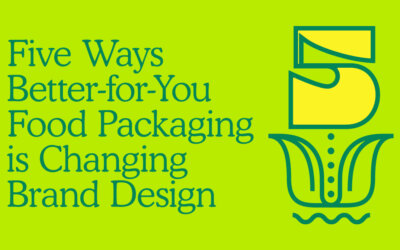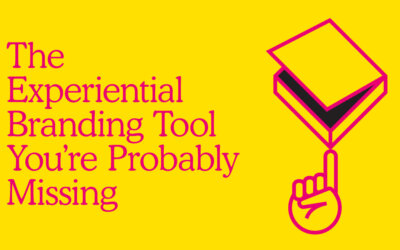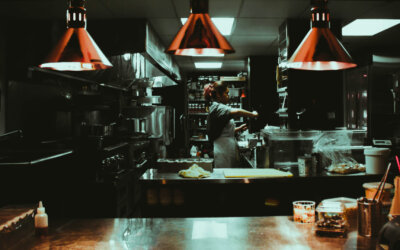Prototyping
From Pixels to Prototypes: The Role of Physical Design in a Digital Age

Ali Noe
Senior Model Maker
July 15, 2024
With the emergence of AI tools, the latest cultural shift has brought us more into a digital age than ever before. From working at home to streaming our media, the introductory experience we have with most products is digital, not physical. New technologies have evolved to a point where it is simple to automate even creative decisions. While these workflows and tools can be incredibly useful in both providing accessibility and efficiency, they are not complete replacements for iterative prototyping.
Understanding Limitations
In the world of product and packaging design, jumping from design to manufacturing can miss opportunities for a truly impressive user experience, and jumping from AI to manufacturing can prove to be even more catastrophic. At the end of the day, our consumers are human and we need to be strategic about how objects are processed on a human scale.
Even if the difference is intuitive, our chosen demographics have a clear read on when their experiences are taken into account. The generalizations AI amalgamates from its library of sources can lead to an uncanny valley depiction of the intended product. AI prompts can also create fantastical representations of concepts that are impossible to recreate when it comes to physical manufacturing. If these ideas are passed directly to manufacturing, the resulting creation can be underwhelming in comparison. For consumers, this creates a feeling of unease or distrust instead of the intended result of recognition and loyalty. When AI is the only tool used in the design process, real-world worst case scenarios have been glaringly obvious and comically tone deaf.
Anticipating Cutting Edge
The use of AI technology can be a polarizing subject, and its capabilities and regulations will continue to warp quickly within the coming years. Regardless of a personal stance on the implications of its use in various industries, it is here now as a valuable tool for idea development. The design-to-fabrication process has been constantly bolstered by the emergence of new digital tools. We’ve come a long way from pencil and paper to full 3D renders. Like any powerful new tool, AI needs to be closely studied to fit into the developmental processes of building a product.
At Kaleidoscope, we have been excited to see AI implemented by various clients as a way to illustrate their concepts. Our teams have had their own training with AI tools for broadening the ideation phases of projects. The speed at which simple ideas can be illustrated has streamlined communication. Individuals without formal training in design tools can have instant visual representations of the ideas they would like to see developed. Those with design training have a clear understanding of what can be further developed and what the zeitgeist expects. The images resulting from carefully constructed prompts are wonderful references to use in processing the products they will become.
Making Artificial Real
Working in collaboration with AI reference or digital design, our team of structural designers and fabrication experts can implement a variety of rapid prototyping techniques such as 3D printing, CNC milling, and hand building. The resulting structure is a study in what digital or AI imagination cannot yet portray:
What is the user experience? How is this product held? How does the volume affect the weight, and how can it be made more ergonomic? What materials can be implemented to bolster the concept of the brand? How does this product look in a variety of lighting and real-world contexts?
It is this step of experimentation that brings life and brand expression to each iteration. Being able to create these studies on a small scale allows for impressive examples in sales sample meetings, accurate props for focus group data collection, and perfect brand hero examples for photo and film media applications. The physical prototype does all of this without the need for the larger-scale manufacturing process. This allows feedback to alter the final form without unsustainably redirecting the means of production. These tangible models serve as critical intermediaries between the initial idea and the final product, providing invaluable insights that digital renderings or AI references alone cannot.
Specifically, our model shop has been in collaboration with AI. Recently a brand asked us to develop a real-world bottle structure from their AI generated image. We established the parameters and modeled it in our CAD software, then milled the prototype from acrylic to represent the final intended manufactured glass. We have also been tasked with combining a fruit with a beverage holder and a rocket ship with a soda can. Giving AI these mashup prompts resulted in some additional resources to present to our client in development of their ideas.
Leading the Charge
As advocates for innovation at Kaleidoscope, we embrace AI’s potential while recognizing the irreplaceable value of hands-on experimentation. By leveraging both digital advancements and physical prototyping techniques, we empower our clients to transform imaginative visions into compelling, market-ready realities. In this way, the future of product design thrives at the intersection of artificial intelligence and tangible innovation, promising a landscape where creativity and practicality converge to shape a more responsive and empathetic consumer experience.
More Insights
Five Ways Better-for-You Food Packaging is Changing Brand Desi
Better-for-you packaging design is a genre unto itself, but it’s influencing brands far beyond wellness. Here are the five themes you need to understand to see just why BFY design has consumers spending trillions (and the rest of the world scrambling to catch up).
The Experiential Branding Tool You’re Probably Missing
Feeling lost in the noise of modern marketing? Discover the power of sales, influencer and seeding kits in modern branding strategies. In this article, we explore how these experiential tools elevate brand awareness, drive sales, and foster new partnerships.
Foodservice Packaging: The Forgotten Frontier
Discover the untapped potential of foodservice packaging in revolutionizing brand presence and consumer engagement. From cultivating chef buy-in to leveraging innovative packaging designs, unlock insights to reshape the future of food marketing and sustainability.



